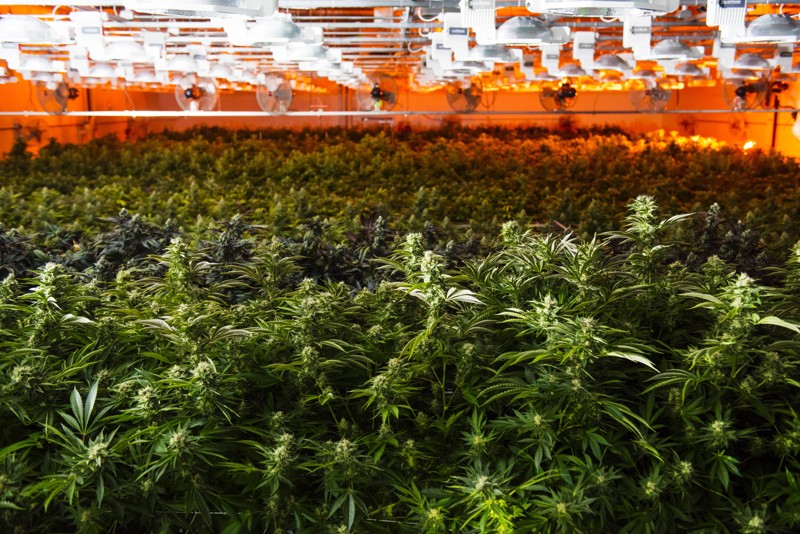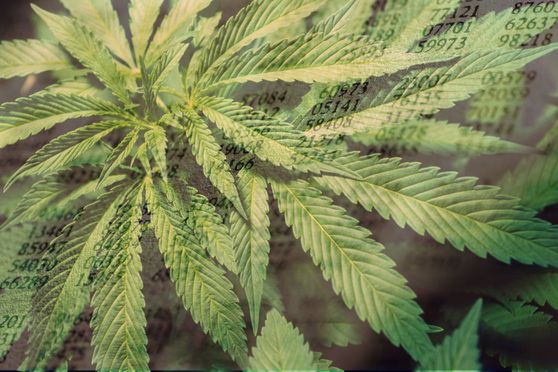Marijuana is often associated with a nostalgic, hippie, care-free lifestyle, but as legalization occurs throughout the world, the user demographics and outlook on cannabis is changing. The reality is that the legal cannabis industry is actually a massive, corporate industry that is having major environmental impact.
Currently, marijuana is the most energy-intensive commodity in agriculture due to the high energy costs required for 24-hour indoor lighting and HVAC systems in indoor production facilities. Most commercially produced cannabis is produced in indoor grow facilities, which consumes more energy and resources than outdoor facilities.
A new report titled “Illuminating Cannabis: The Future of Energy in the Industry”, sheds light on just how substantial the legal industry’s energy footprint really is. It found that the production of marijuana accounts for one percent of the total energy output in the US.
Impacts to the electricity grid have been most notable in the states where recreational pot has been legalized. In California, for example, three percent of the state’s energy output is accounted for by cannabis production alone.
The energy demanding industry is not only harmful to the environment but is becoming increasingly more expensive for growers as competition in the industry becomes stiffer.“As legalization continues and more producers enter the industry, the prices of marijuana drop, and energy becomes a much larger fraction of the cost to produce,” said Bryan Jungers, Lead Analyst at E Source and member of the Technical Advisory Committee for the Resource Innovation Institute. “A lot of times, producers are rushing to increase production trying to stay on top of the competition without making energy considerations beforehand.”
Currently, energy costs account for close to half of the total wholesale price of marijuana. Since marijuana is still illegal at the federal level, cultivators are also frozen out of many incentives that would improve efficiency such as tax breaks for purchasing solar panels.
The Resource Innovation Institute, based in Portland, Oregon, is a nonprofit organization working to solve energy issues that are unique to the legal cannabis industry. Their objective is to transform the industry toward carbon-free and water-wise production.
They have recently created the Cannabis PowerScore, an online self-audit tool to help growers compare their energy performance to similar producers.
Their work throughout 2017 has focused on solving challenges related to the lack of data concerning energy consumption from growing facilities. The idea is for growers to submit their information confidentially and their PowerScore will be sent via email.
The data is used to create industry benchmarks on energy performance in grow facilities, to help cultivators self-assess their performance and to gain support in moving toward more efficiency and to assist governments, utilities and manufacturers in creating policies and incentives to drive conservation.
The PowerScore calculates the facility efficiency (kWh/SF) and the production efficiency (grams/kWh) in order to rank a grower’s performance. It also determines separate scores for lighting and HVAC if it’s relevant to the type of operation.
Growers are also able to choose their comparison by the production type (indoor, outdoor, greenhouse, hybrid), by region, by both or neither which will default to a North American average.
Cannabis PowerScore has been tested by users from facilities in Oregon, California, Washington, Colorado, Illinois, Ohio and the province of Ontario.
As more growers enter the industry, the demand for energy will increase so it’s important for leaders in the industry to practice energy efficient practices that will benefit growers and the environment. Growers who adopt more energy efficient measures will fare better if marijuana prices continue to drop.
credit:420intel.com













